
Estreitinho or Morro dos Homens is the highest peak on Corvo Island, Azores, Portugal. It measures 718 m (2,356 ft) and is located on the southern rim of Corvo's caldera
Lundin Mining Corporation is a Canadian company that owns and operates mines in Sweden, United States, Chile, Portugal and Brazil that produce base metals such as copper, zinc, and nickel. Headquartered in Toronto, the company was founded by Adolf Lundin and operated by Lukas Lundin. While it was incorporated to pursue an interest in a diamond mine in Brazil, the company re-structured and raised funds to develop the Storliden mine in Sweden. It purchased the Swedish Zinkgruvan Mine from Rio Tinto and then merged with Arcon International Resources for its Galmoy Mine in Ireland and Eurozinc for its Neves-Corvo mine in Portugal. The company subsequently purchased and operated the Eagle mine, Candelaria mine, and Chapada mine.

Neves-Corvo mine is a zinc-copper mine 15 km southeast of Castro Verde, Portugal and 220 km southeast of Lisbon, in the district of Beja. It has a dedicated rail link to the port of Setúbal. The mine is principally accessed by shaft mining and a ramp from surface. It is a main producer of copper and zinc mineral.
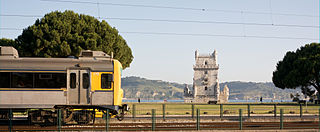
The Cascais Line is a Portuguese railway line which connects the municipalities of Lisbon, Oeiras, and Cascais. The line starts in Lisbon, at Cais do Sodré and ends in Cascais. On the Lisbon urban trains' diagram it is shown in yellow. The first section, from Cascais to Pedrouços, was opened in 1889. The line was completed in 1895. It was the first heavy rail line to be electrified in Portugal, in 1926, and the last to be integrated into CP, in 1977. In July, 2020, CP announced that the line is slated to be converted from 1500 V DC electrification, to 25 kV AC, to match the rest of the network. Signalling will also be upgraded and new trains acquired.
Mining in Portugal is regulated by the Portuguese Ministry of Economy and the Geology and Energy Resources authority under the state-run research institute INETI. Mining activities have continued since the pre-Roman era, when most of the region was known as Lusitania. Gold was once mined. The country remains among the largest European producers of copper and minerals.

Ramal de Alfarelos is a railway branch in Portugal, which connects the Western Line to the Northern Line, offering a connection between Figueira da Foz and Coimbra.

Linha da Beira Baixa, originally called Caminho de Ferro da Beira Baixa, is a railway line which connects the stations of Entroncamento and Guarda in central Portugal. The first section, from Abrantes to Covilhã was opened on 6 September 1891. The line to Guarda was opened on 11 May 1893. At the time, only the section from Abrantes to Guarda was considered to be part of Linha da Beira Baixa, while the route from Entroncamento to Abrantes belonged to the Linha do Leste. Passenger service on the Guarda-Covilhã segment reopened on 2 May 2021 after it fell into disuse in 2009.
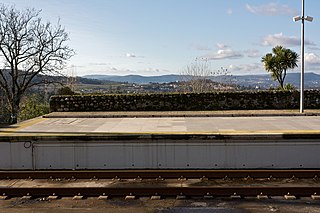
Ramal de Braga is a branch line in Portugal, which connects Nine railway station on the Linha do Minho, with Braga. It was opened on 21 May 1875. and modernised in 2004.
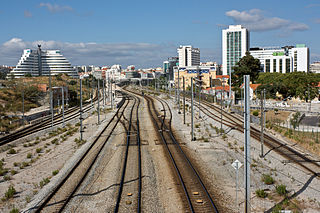
The Cintura Line is a railway line in Lisbon, Portugal. The half circle route was opened in 1888 and serves as a connection between all railway lines in Lisbon: The Cascais, Sul, Sintra, and Norte Lines. There are two railway triangles, one in Sete Rios, and another in Xabregas. It crosses all four Lisbon Metro lines, and connects to three of those at four stations.

Linha de Évora is a railway line in Portugal, which connects Casa Branca and Évora.

Linha de Leixões, also known as Linha de Cintura do Porto, is a freight railway line which connects Contumil railway station, on the Linha do Minho, and Leixões, in Matosinhos, Portugal. It was opened in 1938, and electrified in 1998. Passenger services ran until 1987 and from 2009 to 2011.

Linha do Leste is a Portuguese railway line which connects Abrantes railway station to the border with Spain, near to Elvas. The connection to Spain was opened on 24 September 1863.

Ramal da Lousã is a railway line which connects the stations of Coimbra-B, on the Linha do Norte, and Coimbra, in Portugal. It was opened by the Companhia Real dos Caminhos de Ferro Portugueses, under the name Ramal de Coimbra, on 18 October 1885, and was extended to Lousã on 16 December 1906, and to Serpins on 10 August 1930.

Ramal do Pego is a railway branch in Portugal, which connects the station of Mouriscas-A, on the Linha da Beira Baixa, to the Pego Power Station.
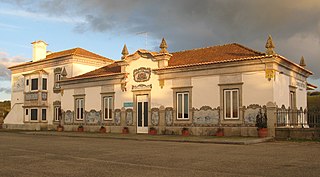
Ramal de Portalegre, originally called Linha de Portalegre, is a closed railway line which connected the stations of Estremoz, on the Linha de Évora, and Portalegre, on the Linha do Leste. It was planned to connect Estremoz to Castelo de Vide, on the Ramal de Cáceres, but the railway was only built to Portalegre-Gare. The line was opened on 21 January 1949, and closed in 1990.
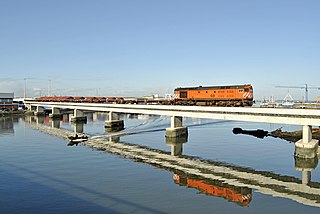
Ramal do Porto de Aveiro is a railway branch in Portugal which connects the cargo terminal of Cacia to the Port of Aveiro. It was opened in March 2010.

Ramal da Siderurgia Nacional is a Portuguese freight railway line which connects the station of Coina to the industrial complex of Siderurgia Nacional. The line opened in March 2008.
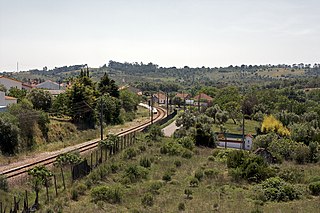
Ramal de Tomar is a Portuguese railway line which connects the stations of Lamarosa, on the Linha do Norte, and Tomar. It was opened on 24 September 1928.
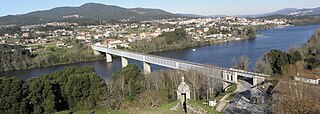
Ramal Internacional de Valença is an international railway line which connects the stations of Valença, in Portugal, and Guillarei, in Galicia (Spain). It was opened on 25 March 1886.















